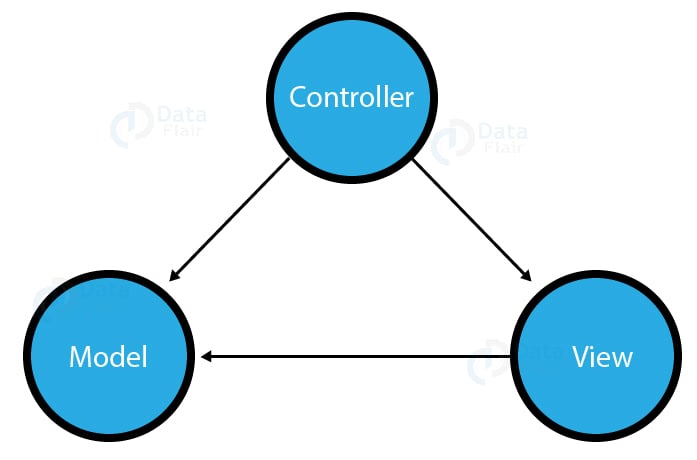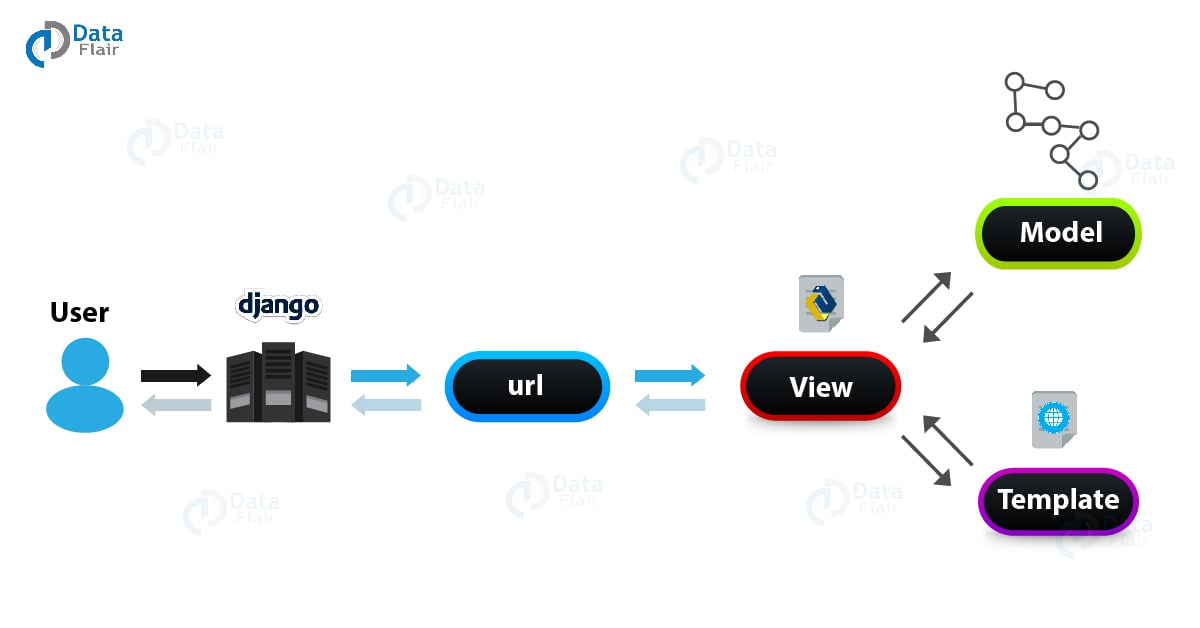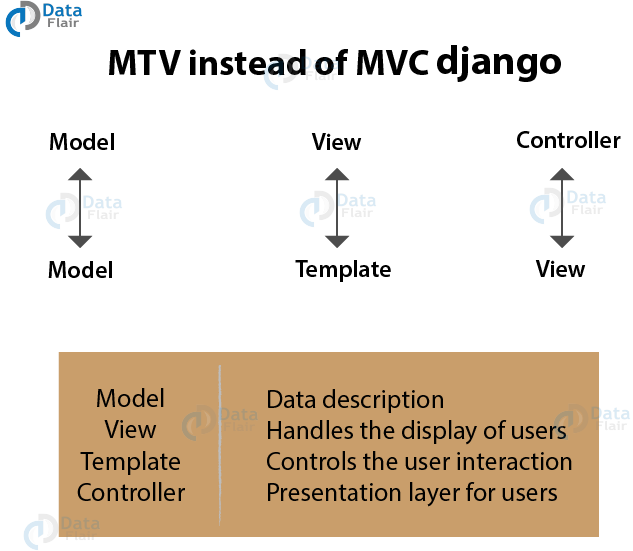Django Architecture – 3 Major Components of MVC Pattern
Python course with 57 real-time projects - Learn Python
FREE Online Courses: Dive into Knowledge for Free. Learn More!
In the previous article, we learned the unique features of Django. Now, we will discuss about Django architecture based on MVC pattern. We will be understanding the MVC pattern in more detail. Django MVC architecture solves lots of problems which were there in the traditional approach for web development.
We will understand the components of the MVC pattern that are Model, Views, and Controller in detail.
Learn to Install Django in Easy Steps
MVC Pattern in Django Structure
For every website on the Internet, there are 3 main components or code partitions; Input Logic, Business Logic, and UI Logic.
These partitions of code have specific tasks to achieve, the input logic is the dataset and how the data gets to organize in the database. It just takes that input and sends it to the database in the desired format. The Business logic is the main controller which handles the output from the server in the HTML or desired format. The UI Logic as the name suggests are the HTML, CSS and JavaScript pages.
When the traditional approach was used for programming all this code was written in a single file, i.e., every piece of code increases the webpage size, which is downloaded and rendered by the browser. This was not a big problem back in the time, the webpages were largely static and websites and didn’t contain much multimedia and large coding. Also, this architecture poses difficulty for developers while testing and maintaining the project as everything is inside one file.
Now, time is changing and the websites are getting bigger and bigger while providing applications like cloud computing and online artificial intelligence training, online development environments and what not, these projects are all implemented using MVC architecture.
So, what is MVC? It is an acronym for Model View Controller. Don’t worry we will learn every aspect of the MVC pattern and also relate it to Django.
Technology is evolving rapidly!
Stay updated with DataFlair on WhatsApp!!
MVC pattern is a Product Development Architecture. It solves the traditional approach’s drawback of code in one file, i.e., that MVC architecture has different files for different aspects of our web application/ website.
The MVC pattern has three components, namely Model, View, and Controller.
This difference between components helps the developer to focus on one aspect of the web-app and therefore, better code for one functionality with better testing, debugging and scalability.
The Django architecture diagram below shows the working cycle of Django MVC architecture.
1. Model
The Model is the part of the web-app which acts as a mediator between the website interface and the database. In technical terms, it is the object which implements the logic for the application’s data domain. There are times when the application may only take data in a particular dataset, and directly send it to the view (UI component) without needing any database then the dataset is considered as a model.
Although today if we want any kind of website we need to have some sort of database as we must be requiring some user input even if we are creating a simple blog site.
The Model is the component which contains Business Logic in Django architecture.
For example:
When you sign up on any website you are actually sending information to the controller which then transfers it to the models which in turn applies business logic on it and stores in the database.
Explore how to create a project in Django.
2. View
This component contains the UI logic in the Django architecture.
View is actually the User Interface of the web-application and contains the parts like HTML, CSS and other frontend technologies. Generally, this UI creates from the Models component, i.e., the content comes from the Models component.
For example:
When you click on any link or interact with the website components, the new webpages that website generates is actually the specific views that stores and generates when we are interacting with the specific components.
3. Controller
The controller as the name suggests is the main control component. What that means is, the controller handles the user interaction and selects a view according to the model.
The main task of the controller is to select a view component according to the user interaction and also applying the model component.
This architecture has lots of advantages and that’s why Django is also based on this architecture. It takes the same model to an advanced level.
For example:
When we combine the two previous examples, then we can very clearly see that the component which is actually selecting different views and transferring the data to the model’s component is the controller.
Understand the Django Project Layout & Files Structure
MTV Pattern
Django is mainly an MTV (Model-Template-View) framework. It uses the terminology Templates for Views and Views for Controller.
Template relates to the View in the MVC pattern as it refers to the presentation layer that manages the presentation logic in the framework and essentially controls the content to display and how to display it for the user.
Thus our Python code will be in views and models and HTML code will be in templates.
Benefits of Django Architecture
The Django Framework is based on this architecture and it actually communicates between all these three components without needing to write complex code. That’s why Django is gaining popularity.
This architecture in Django has various advantages like:
1. Rapid Development
Actually, this Django architecture that separates in different components makes it easy for multiple developers to work on different aspects of the same application simultaneously. That is also one of the features of Django.
2. Loosely Coupled
This architecture of Django has different components which require each other at certain parts of the application, at every instant, that increases the security of the overall website. As the model file will now only save on our server rather than saving on the webpage.
3. Ease of Modification
This is an important aspect of development as there are different components in Django architecture. If there is a change in different components, we don’t have to change it in other components.
This is actually one of the special features of Django, as here it provides us with much more adaptability of our website than other frameworks.
Check out Django books for gaining Django Web Development knowledge.
Summary
We covered the MVC pattern of Django architecture and explained the components; Model, View and Controller in detail. We also learned some advantages of Django architecture.
Furthermore, if you have come across with any queries or suggestions, you can simply enter in the comment section.
Did you know we work 24x7 to provide you best tutorials
Please encourage us - write a review on Google





